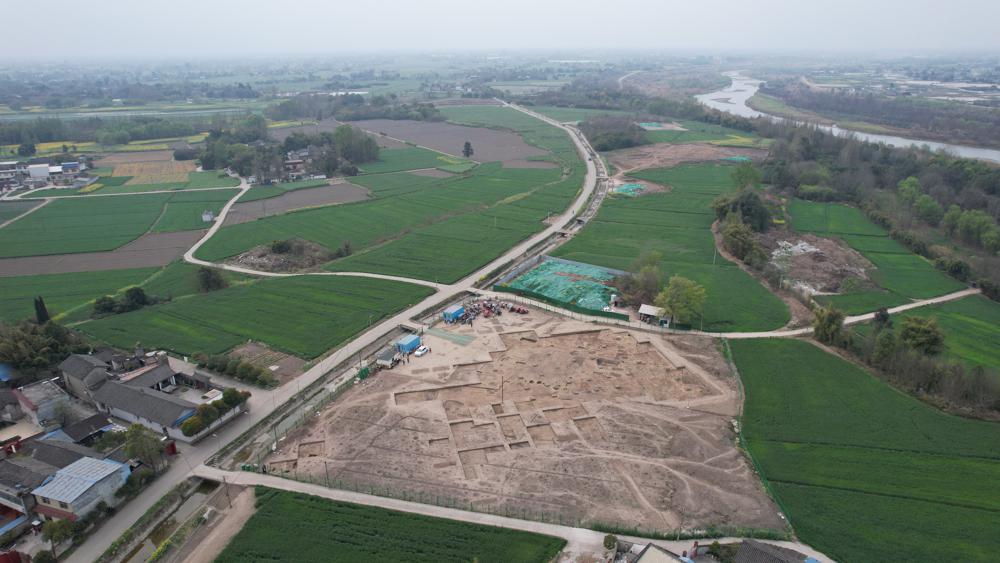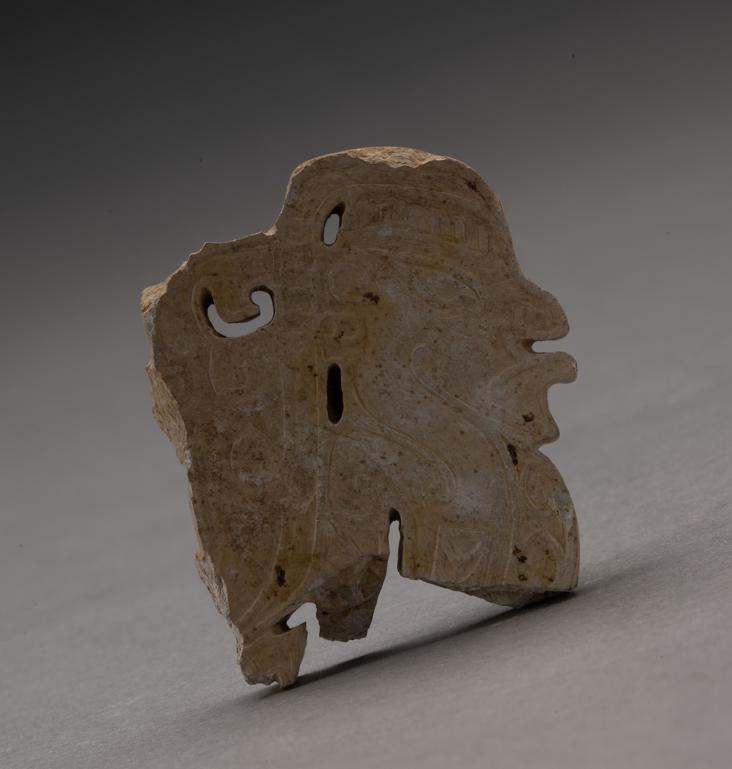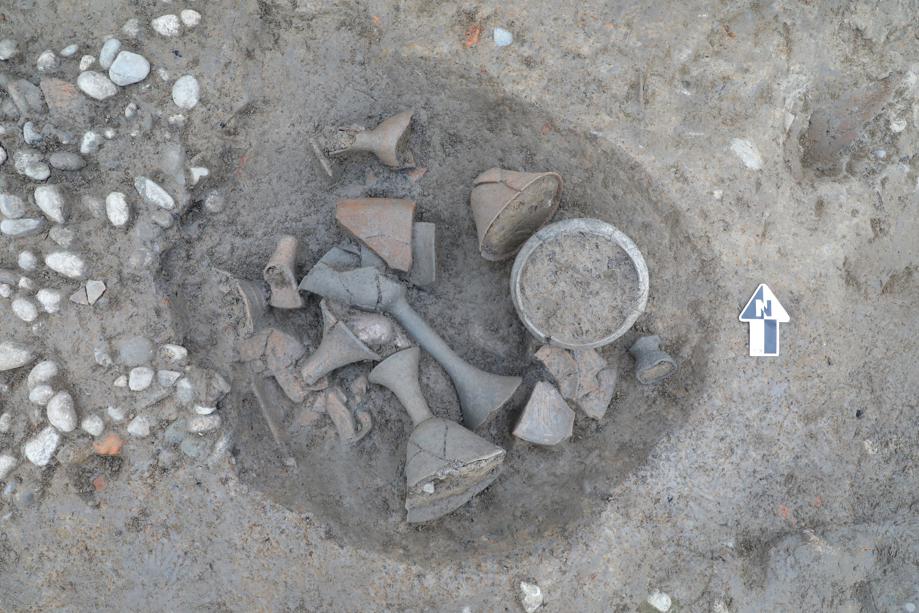【QB-007】JUN女王様 BESTコレクション 三星堆考古新发本质证3000年前城市计较
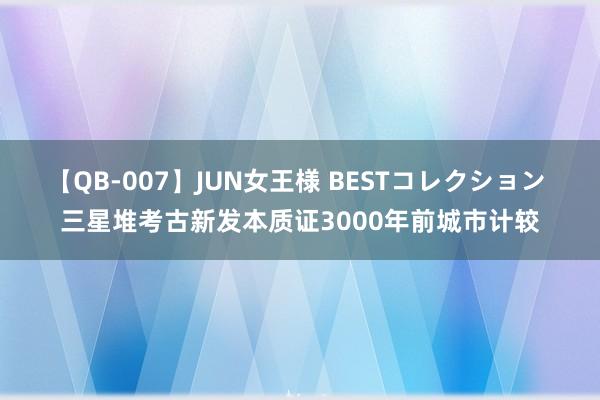
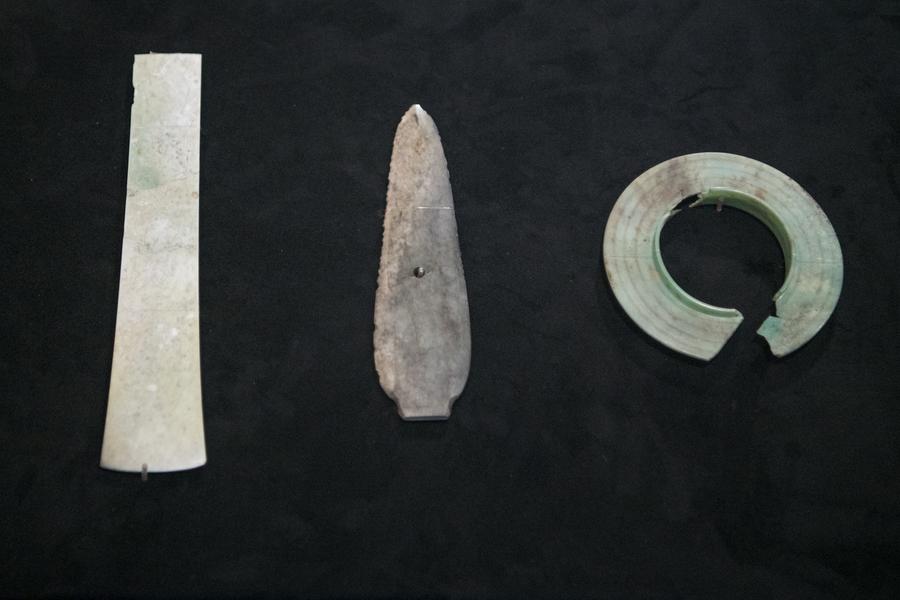
The photo taken on July 21, 2024 shows jadeware discovered at the Sanxingdui Ruins site in Guanghan city, Southwest China's Sichuan province. [Photo/Xinhua]
New archaeological evidence unearthed at the Sanxingdui Ancient City (三星堆古城, sān xīng duī gǔ chéng) site suggests that the city had consistent foundations throughout and clear urban planning more than 3,000 years ago (距今3000多年前,三星堆古城已有明晰城市计较, jù jīn sān qiān duō nián qián, sān xīng duī gǔ chéng yǐ yǒu qīng xī chéng shì guī huà).
The Sichuan Provincial Cultural Relics and Archaeology Research Institute (四川省文物考古连络院, sì chuān shěng wén wù kǎo gǔ yán jiū yuàn) said that although some sections of the walls have been damaged over time, archaeologists have reconstructed the basic layout of the city based on exploration of the existing city walls (诚然城墙部分区段在历史上一经遭到龙套,但考古学家阐明对现有城墙的勘测,仍还原出城址的基本步地 suī rán chéng qiáng bù fēn qū duàn zài lì shǐ shàng yǐ jīng zāo dào pò huài, dàn kǎo gǔ xué jiā gēn jù duì xiàn cún chéng qiáng de kān tàn, réng fù yuán chū chéng zhǐ de jī běn gé jú).
The Sanxingdui Ancient City site in Guanghan, Sichuan province (三星堆古城城址位于四川省广汉市, sān xīng duī gǔ chéng chéng zhǐ wèi yú sì chuān shěng guǎng hàn shì), covers about 3.6 square kilometers (面积约3.6泛泛公里, miàn jī yuē sān diǎn liù píng fāng gōng lǐ) and has a northwest-southeast layout (呈西北-东南向, chéng xī běi - dōng nán xiàng), basically consistent with the high-grade building foundations and jade workshop discovered since 2022 (该朝向与2022年至2024年在三星堆古迹新发现的高级第设置基址和玉石器作坊基本保抓一致 gāi cháo xiàng yǔ 2022年 zhì 2024 nián zài sān xīng duī yí zhǐ xīn fā xiàn de gāo děng jí jiàn zhù jī zhǐ hé yù shí qì zuō fang jī běn bǎo chí yī zhì).
Based on newly discovered water gates and city gates (水门、城门, shuǐ mén、chéng mén), the main axis of Sanxingdui city was the result of the ancient people adapting to the local geographical environment, and the natural mountains and riverbeds at that time (三星堆古城的主轴线是古蜀东说念主民符合当地地舆环境的服从,参考了其时的当然山川走势 sān xīng duī gǔ chéng de zhǔ zhóu xiàn shì gǔ shǔ rén mín shì yīng dāng dì dì lǐ huán jìng de jié guǒ , cān kǎo le dāng shí de zì rán shān chuān zǒu shì), said Xu Danyang, deputy head of the institute's Sanxingdui site (四川省文物考古连络院三星堆古迹使命站副站长许丹阳, sì chuān shěng wén wù kǎo gǔ yán jiū yuàn sān xīng duī yí zhǐ gōng zuò zhàn fù zhàn zhǎng xǔ dān yáng).
A bird's eye view of the excavated area in the Sanxingdui Ruins. [Photo provided by the Sichuan Provincial Cultural Relics and Archaeology Research Institute/For chinadaily.com.cn]
According to the institute, the city's northern and southern parts were divided by a river, with the northern section housing the palace and workshop areas, while the southern part contained the sacrificial area (北边有宫殿区、手工业作坊区【QB-007】JUN女王様 BESTコレクション,南方有祭祀区 běi biān yǒu gōng diàn qū、shǒu gōng yè zuō fang qū, nán biān yǒu jì sì qū).
Water gates were situated on the eastern and western sides, and the city was surrounded by thick and sturdy walls with gates and roads, connecting it to the surrounding regions.
The layout was convenient for both production and daily water intake, as well as for utilizing waterways to connect with the outside world, reflecting advanced urban construction ideas (如斯布局一方面便于出产生存汲水用水,另一方面又便于行使水路对外有关,体现出先进的城市兴建想想 rú cǐ bù jú yī fāng miàn biàn yú shēng chǎn shēng huó qǔ shuǐ yòng shuǐ , lìng yī fāng miàn yòu biàn yú lì yòng shuǐ lù duì wài lián xì , tǐ xiàn chū xiān jìn de chéng shì yíng jiàn sī xiǎng), Xu said.
日本AVA jade human figure from the excavated area in the Sanxingdui Ruins.[Photo provided by the Sichuan Provincial Cultural Relics and Archaeology Research Institute/For chinadaily.com.cn]
Scholars believe Sanxingdui was established 2,800 to 4,800 years ago (三星堆建于2800至4800年前, sān xīng duī jiàn yú liǎng qiān bā bǎi zhì sì qiān bā bǎi nián qián), and archaeological discoveries show it was a prosperous, highly developed cultural hub.
The site was discovered in 1929 when Yan Daocheng, a local villager, unearthed a pit full of jade and stone artifacts (精雅的玉石器, jīng měi de yù shí qì) while repairing a sewage ditch at the side of his house.
Archaeologists have conducted excavations there since the 1930s. They had a major breakthrough in 1984 when the remains of large palaces and parts of the eastern, western and southern walls of an ancient city were found. In 1986, two large pits (祭祀坑, jì sì kēng) full of bronze artifacts, including masks and figurines (面具和雕像, miàn jù hé diāo xiàng), were dug up.
A pitful of pottery objects from the excavated area in the Sanxingdui Ruins. [Photo provided by the Sichuan Provincial Cultural Relics and Archaeology Research Institute/For chinadaily.com.cn]
The discoveries confirmed the site comprised the ruins of a city that was the political, economic and cultural center of the ancient Shu Kingdom (古蜀国, gǔ shǔ guó), an ancient civilization that existed in what is now Sichuan province.
The site was one of China's most important archaeological discoveries in the 20th century (20世纪中国最伟大的考古发现之一, èr shí shì jì zhōng guó zuì wěi dà de kǎo gǔ fā xiàn zhī yī).
Since 2020, six new pits next to the first two have been excavated, and artifacts found in them are now on display in the new Sanxingdui Museum, which opened in July last year.
The new museum has attracted over 5 million visitors from around the world (三星堆博物馆新馆迷惑了来自寰球各地的500多万旅客参不雅 sān xīng duī bó wù guǎn xīn guǎn xī yǐn le lái zì shì jiè gè dì de wǔ bǎi duō wàn yóu kè cān guān).
开端:chinadaily.com.cn
剪辑:万月英【QB-007】JUN女王様 BESTコレクション

